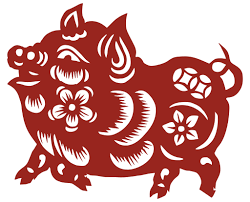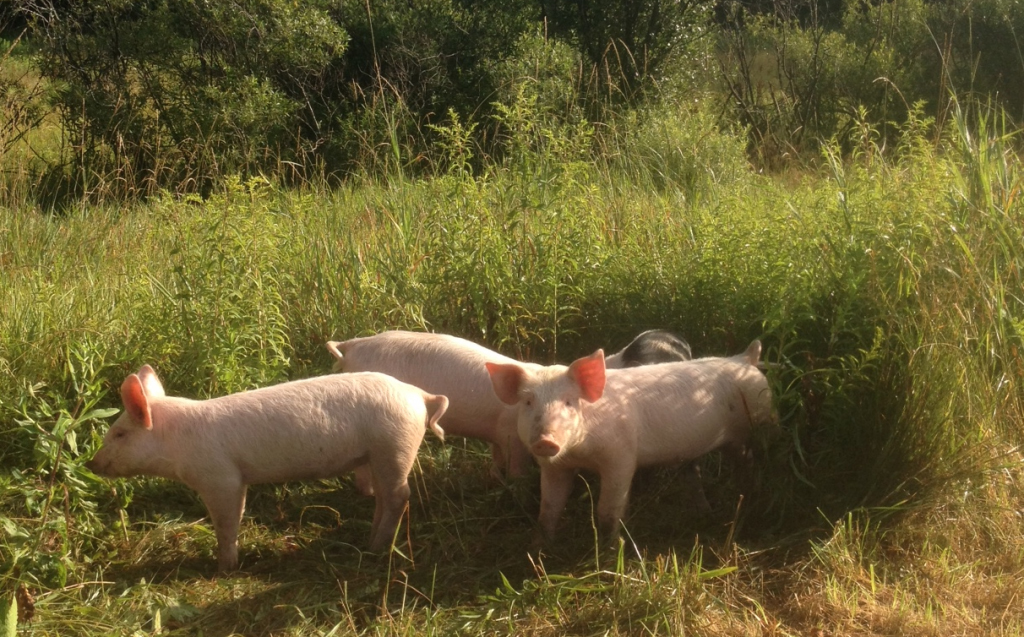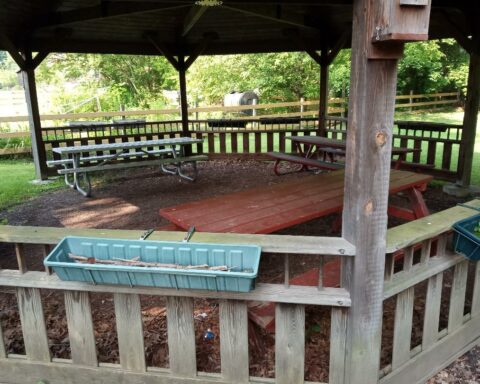My image of our leaders in Washington is of a herd of pigs wallowing in the muck. But that’s a disservice to pigs. I love pigs, and I really wish politicians were more like them.
I raised pigs for several years, beginning with Milda, a Yorkshire I had every intention of raising to 150 pounds and putting in the freezer. Like a pink puppy, Milda was soon following me around and visiting the other animals. She was a “Babe.” I decided, “Hey, I like pigs. I want more!” When Milda reached maturity, I trucked her off to a friend with a boar. The union resulted in a litter of fourteen. Of these, I kept five females, rounding out the herd to a half dozen. An extension that included a maternity wing was added to the barn, three roomy straw-filled pens for my girls. And Milda became the matriarch of hogdom.
Moving pigs was a tedious and often nearly impossible task which required at least two, usually several, people. One of us would put a bucket over the sow’s head, and as she walked backward retreating from the bucket, a helper steered her up a ramp by the tail, into a livestock carrier or truck. Commercial hog producers use more efficient methods, but that takes all the fun out of it. With six sows being bred twice a year, I decided it was time to have our own boar. My pigs had a nice field, with a shelter, trees and water, encircled by a fence of stock wire and cedar poles. It wasn’t very secure, but it was homey.

Next, I bought Paddy, an Irish White piglet with papers from a long line of pigs with nice lines. As he became more manly, he grew tusks. I had somehow missed the recommendation that these should be clipped early on. Paddy doubled in size many times and quickly got the hang of why he was there. He bred sows and protected his family, and would to the death.
The state technicians came once a year to draw blood to test for disease. They had always been very condescending when visiting the woman with just a couple of sows. This year was different. When they saw Paddy, testing the flimsy fence, tusks dripping with saliva, they refused to go in. I decided this was my opportunity to get some R-E-S-P-E-C-T. Paddy wasn’t keen on my sliding the needle into his neck, but he allowed it. Paddy and I had a relationship built on trust.
Because we had six sows but only three birthing pens, the breeding schedule was calculated so that we wouldn’t have more than three at one time needing space for the six weeks they would be confined with their litters. One cold winter afternoon, I rotated Milda back to the field two days earlier than normal and replaced her with another sow. As we ate dinner that evening, I heard a commotion on the front porch. Milda jumped up, trotters on the window sill, screaming at me. Steam formed around her snout as she pressed against the glass, which I was afraid would crash at my feet at any moment.
Milda wanted her babies back. She knew I had cut her time short, and the boundaries which she normally respected were no match for mother love and justice. Paddy and the other sows in the field had marched right behind her and were staging a protest in the driveway. I threw on a coat and raced Milda to the barn, in the dark, through the snow, where she happily woofed her love for her piglets. The others obediently followed me and a bucket of grain back to the field.
I’d be happy if our, well you know, were more like pigs. Unlike the barnyard in Washington, I had only one pig that was evil, and I called her Zany, because her behavior was so bizarre. When the time came to thin the herd, she was the obvious cull. The others were smart, loyal, had family values and a real sense of community. They knew the difference between right and wrong and played by the rules. And I think they knew that if like Zany, they didn’t, I’d be making sausage.



![Terry Winters, Untitled (2), 1999; gouache on paper, 44 1/4 X 30 1/2 inches; private collection [Source: Matthew Marks Gallery]](https://www.greylockglass.com/wp-content/uploads/2019/02/48c88952a8ec7dfbd7041827a6e46bee86e8c132-713x1024.jpg)




